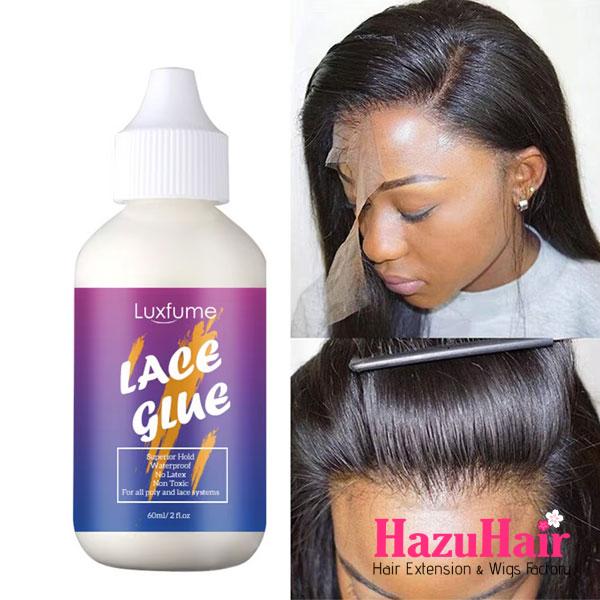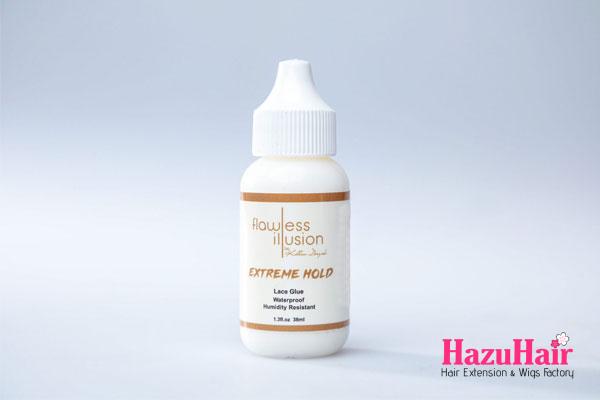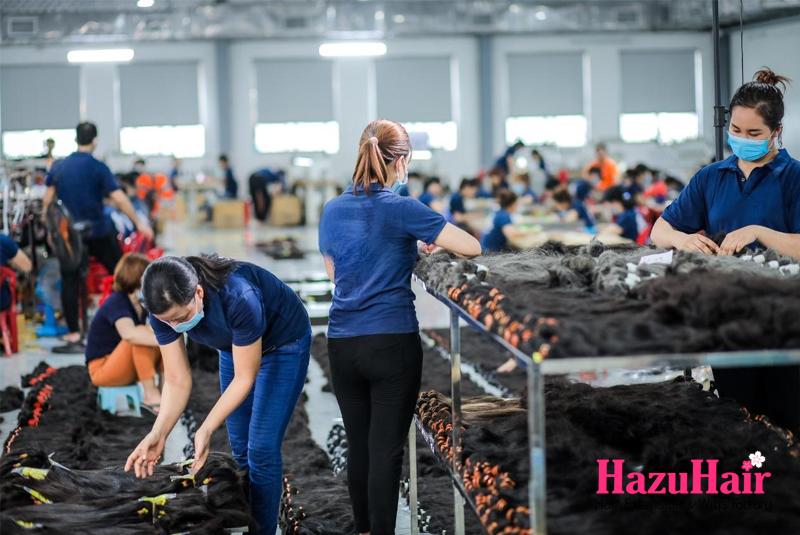Hair knowledge
How to Remove Lace Glue Safely Without Damaging Your Wig
For your first lace installation, one of the biggest concerns is whether the lace glue will hold securely throughout wear. The quality of your lace glue plays a crucial role in ensuring a flawless and long-lasting installation. However, removing lace glue requires patience and the right technique rushing the process can damage your edges and disrupt your natural hair routine.
That’s why it’s essential to learn how to remove lace glue safely. But don’t worry! In this article, we’ll walk you through the best methods to remove lace glue without harming your wig or natural hair. Before choosing a removal method, consider the type of residue left behind:
- Light lace glue residue – If it has a sticky texture, start with gentle methods like soap or conditioner before moving to stronger solutions.
- Medium to heavy lace glue residue – If the glue doesn’t come off easily, opt for alcohol or a specialized adhesive remover.
For the best results, consider using a remover from the same brand as your lace glue, as it’s specifically formulated for easy removal. Now, let’s dive into the different methods to safely remove lace glue!

>>>Unveiling the Myths: Debunking Common Misconceptions About Raw Vietnamese Hair
Using an Alcohol-Based Solution to Break Down the Glue
After achieving the perfect lace glue installation, removing it properly is just as important as applying it. The product you use will significantly impact how easily and safely you can take off your wig. One of the most effective ways to dissolve lace glue is by using an alcohol-based solution.
Start by pouring a generous amount of rubbing alcohol (at least 70%) onto a clean towel or a handful of cotton balls. The alcohol works by breaking down the adhesive, making the removal process much smoother.
Gently press the towel or cotton ball against the lace, using circular motions to work the alcohol into the glue. Take your time and make sure to cover all areas, paying extra attention to the edges, hairline, and any corners where the glue might have built up. As the alcohol dissolves the glue, you’ll begin to feel the lace loosening from your skin. Patience is key never rush this process, as pulling too hard can damage your edges or the lace itself.
Lifting Off Your Lace
Once the lace has started to loosen, you can begin the careful process of lifting it off. Continue dabbing the area with alcohol or an adhesive remover, allowing the glue to break down completely before you attempt to peel back the lace.
Avoid tugging or pulling forcefully this can lead to hair loss or even tearing the lace. Instead, use slow, gentle movements to separate the lace from your skin. As you remove it, you’ll notice patches of glue left on your forehead. These can be easily cleaned up in the next step.
Take a soft cloth or cotton pad soaked in alcohol and carefully wipe away any remaining adhesive from your skin. This will ensure a clean, fresh surface before moving on to the next phase.
Removing Your Wig Cap with Care
Your wig cap has been in direct contact with your natural hair throughout wear, so it’s essential to remove it gently to avoid damaging your scalp and edges.
- If the cap feels stuck due to glue residue, apply a bit more alcohol around the edges and let it sit for a few seconds before attempting to lift it.
- Slowly peel the wig cap backward, starting from the forehead and moving toward the nape.
- If you feel resistance, stop and apply more alcohol or adhesive remover before trying again.
Once the wig cap is off, inspect your scalp for any leftover glue or residue that may have transferred from the cap to your hair.
Cleaning Off Lace Glue from Your Natural Hair
After safely removing both the lace and the wig cap, the next step is to cleanse your natural hair and scalp from any remaining glue.
- Use your fingertips or a fine-tooth comb to gently loosen any glue particles from your edges.
- If you encounter stubborn residue, apply a light layer of oil (like coconut or olive oil) to break down the glue further. Let it sit for a few minutes before gently combing it out.
- Be gentle to avoid pulling out strands or causing unnecessary stress to your hair.
This step is crucial in maintaining the health of your scalp and preventing product buildup, which can lead to dryness, irritation, and hair loss over time.
Restoring Hydration: Sealing in Moisture
Since alcohol-based removers can be drying, it’s important to replenish moisture and hydration after the removal process. Alcohol evaporates quickly and can strip away natural oils, making your hair dry and brittle.
Here’s how to restore moisture and keep your hair healthy:
- Wash your scalp with a gentle, hydrating conditioner – This helps remove any remaining residue and nourishes your hair.
- Apply a leave-in conditioner or lightweight hair oil – Focus on your edges and natural hair to lock in moisture.
- Use a scalp serum or deep-conditioning treatment – This is especially helpful if you frequently wear lace wigs, as it keeps your scalp healthy and prevents dryness.

>>>Why Raw Vietnamese Hair Is the Gold Standard for Versatility in Hairstyling
Removing Lace Glue Without Alcohol: Safe and Gentle Alternatives
For individuals with sensitive or dry skin, or those prone to breakouts when using alcohol-based products, there are alternative methods to remove lace glue effectively without irritation. While alcohol is a commonly used solution, other options can help break down lace glue bonds gently while preserving the health of your skin and edges.
Below are some effective alcohol-free lace glue removal methods that will leave your skin and scalp in the best condition possible.
Using Acetone: A Strong Yet Effective Alternative
One of the most widely used alternatives to alcohol for lace glue removal is acetone. This powerful solvent can effectively dissolve adhesives and is commonly found in nail polish removers.
How to Use Acetone for Lace Glue Removal:
- Dampen a cotton ball or pad with a small amount of acetone.
- Gently dab it onto the lace glue, allowing it to soak for a few minutes.
- As the glue begins to break down, carefully lift the lace off your skin without pulling too hard.
- Once the lace is removed, use a fine-tooth comb to gently detangle any glue residue from your natural hair.
Important Notes When Using Acetone:
- Acetone contains drying agents, which can strip your skin of moisture if used frequently.
- Limit direct skin contact and always follow up with a moisturizing routine after removal.
- If you have extremely dry or sensitive skin, consider using a hydrating oil or Vaseline to counteract acetone’s drying effects.
Vaseline or Hydrating Oils: A Gentle and Nourishing Approach
For those with sensitive skin, using Vaseline or natural oils is a much gentler alternative. This method not only helps break down lace glue bonds but also nourishes your hairline and scalp, making it one of the safest options.
How to Use Vaseline or Hydration Oils:
- Apply a generous amount of Vaseline or a hydrating oil (such as coconut oil, olive oil, or baby oil) directly onto the lace glue.
- Massage gently using circular motions to loosen the glue.
- Allow the oil to sit for at least 5–10 minutes to fully penetrate and weaken the adhesive bond.
- Once the glue starts to dissolve, use a soft cloth or wet wipe to gently rub away the residue.
- If needed, reapply the oil and repeat the process until all the glue is gone.
Why This Method Works Well:
- Safe for sensitive skin – Unlike alcohol or acetone, Vaseline and oils are non-irritating and help retain moisture.
- Prevents breakage – Oils soften the glue bond, reducing the risk of pulling out edges.
- Restores hydration – This method is particularly beneficial for those with dry scalps or delicate hairlines.
Warm Water Solution: A Natural and Simple Option
If you prefer an all-natural and chemical-free approach, using a warm water solution is an effective yet time-consuming method. This technique is best for loosening glue gradually without causing harm to the skin or lace.
How to Make and Use a Warm Water Solution:
- Fill a spray bottle with warm water and add a small amount of salt, baking soda, or shampoo.
- Shake well to ensure the mixture is properly blended.
- Spray the solution directly onto your lace glue along the hairline.
- Let it sit for 5–10 minutes, allowing the warm water to soften the adhesive.
- Gently lift the lace while continuing to spray the solution as needed.
- Use a soft towel or cotton pad to wipe away any remaining residue.
Things to Keep in Mind:
- While this method is gentle, it takes longer than other techniques.
- Be cautious with excessive water, as it can damage the lace if it becomes too saturated.
- After removing the lace, rinse away any glue residue thoroughly to ensure a clean scalp before your next installation.

>>>The Science Behind the Strength: What Makes Raw Vietnamese Hair So Durable?
Easiest Lace Glue Removal Ever!
Removing lace glue safely is an essential skill for anyone who wears lace wigs. Proper removal techniques help protect your scalp, hairline, and wig, ensuring long-term healthy installations. We’ve explored the best alcohol-free methods for removing lace glue without causing damage. Whether using coconut oil, Vaseline, acetone, or a warm water solution, each method has its benefits, depending on your skin type and hair needs.
While these techniques work effectively, prevention is always the best approach. Avoid harsh chemicals that may cause irritation, rashes, or excessive dryness. Instead, prioritize gentle solutions that nurture your edges and maintain scalp health. If you experience redness, itchiness, or sensitivity, opt for natural oils to soothe and hydrate your skin before reinstallation. This will not only protect your scalp but also promote healthy hair growth.
Additionally, it’s essential to give your scalp and edges a break between installations. Overuse of adhesives can weaken your hairline, leading to thinning or breakage over time. A few days of rest between wig applications can make a significant difference in maintaining strong, healthy edges.
For best results, always cleanse your scalp thoroughly after removal and follow up with a nourishing hair treatment. If you have any concerns or need professional guidance, don’t hesitate to seek expert advice. Keeping your lace glue removal routine gentle and safe will ensure flawless, long-lasting wig installations while protecting your natural hair!
and…

If you’re looking to buy high-quality wigs or hair extensions, look no further than HazuHair.
We are a trusted Vietnamese hair factory with over 100 skilled workers, offering a wide range of hair styles including wavy, curly, straight, kinky, and more.
Our products come in various colors such as natural black, ombre, blonde, red, pink, and many others.
Reach out to us today!
- Hair Factory: Tan Son 2 Village, Tan Dinh, Lang Giang, Bac Giang Province, Vietnam
- Hotline: +849 4949 3883
- Whatsapp Mrs ThanhLam: https://wa.me/84949493883
- Website: https://hazuhair.com
